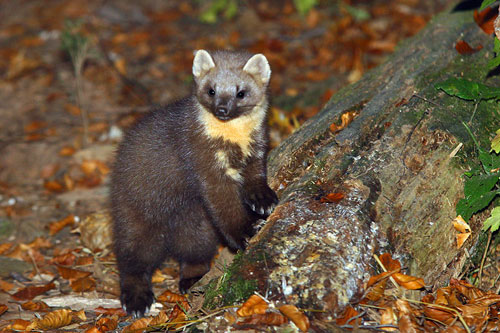A MILLION-pound project has been set up to send some of Scotland’s pine marten population to Wales.
The charismatic animals, once one of the UK’s most declining species, are becoming an increasing sight across Scotland due to measures set up over 30 years ago.
Their recovery north of the Border is so encouraging that conservationists now plan to catch 40 animals in the Highlands and release them in specially selected forests in Powys and Ceredigion.
The last definitive sighting of a pine marten in Wales was a roadkill victim found in 2012.

In fact, the mammals are so rare that experts are unable to estimate how many remain in the wild.
Loss of habitat, fur hunting and culls by gamekeepers in the early 1900s have been blamed for their decline.
But now, conservationists from Vincent Wildlife Trust (VWT) hope introducing the animals from Scotland – where there are up to 3,500 adults – will kick-start a recovery.
Lizzie Croose, VWT’s mustelid conservation officer, said: “There are already some pine martens in Wales but the population has fallen so low there is no chance of it recovering.
“There is really strong evidence that if we don’t do anything the population will just dwindle and vanish forever.
“We are moving animals from Scotland to provide a boost to numbers and genetic diversity.
Fortunate
“Scotland is in the fortunate position of having a very healthy pine marten population that is doing very well.
“Us taking a very small number of animals is not going to affect the Scottish population in any way because it can sustain having some individuals removed.”
VWT is working closely with Scottish Natural Heritage, which is considering an application for a licence allowing the protected animals to be captured and relocated.
The project, which will cost £1.2 million over six years, will see the first animals being rounded up in September or October, once the breeding season is over.
The animals will be fitted with radio collars to allow the team to monitor their spread.
Pine martens have been present in the UK since the last ice age 10,000 years ago, and the mostly nocturnal creatures usually live in woodland areas.
The mammal is similar to a small domestic cat, with a slim body, brown fur and a distinctive yellowish or cream “bib” on its throat.

